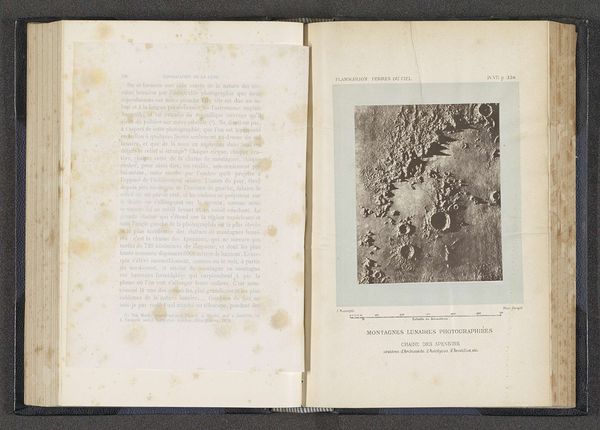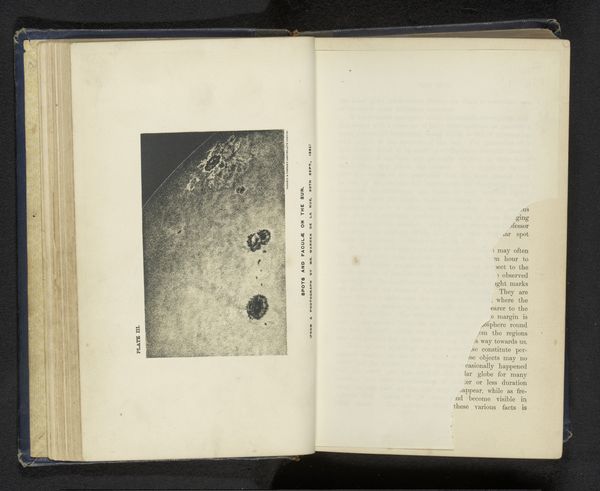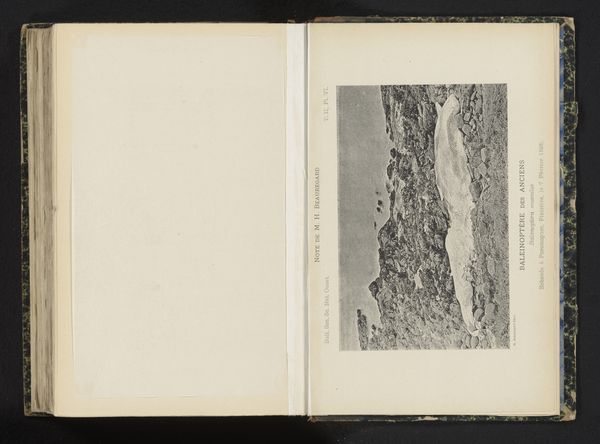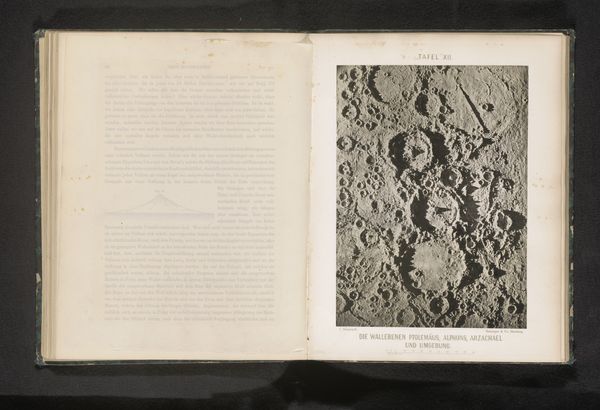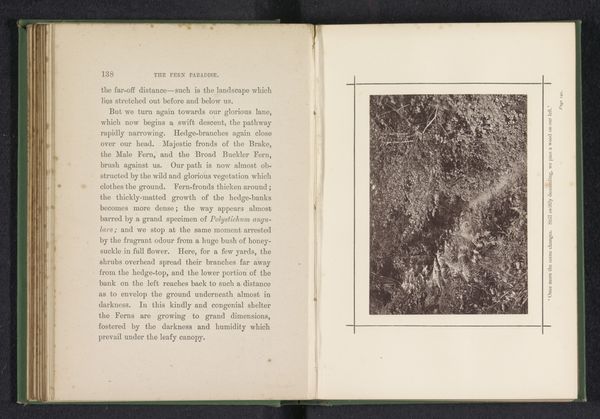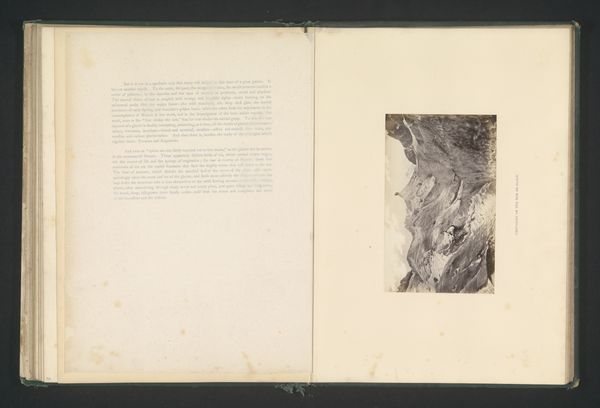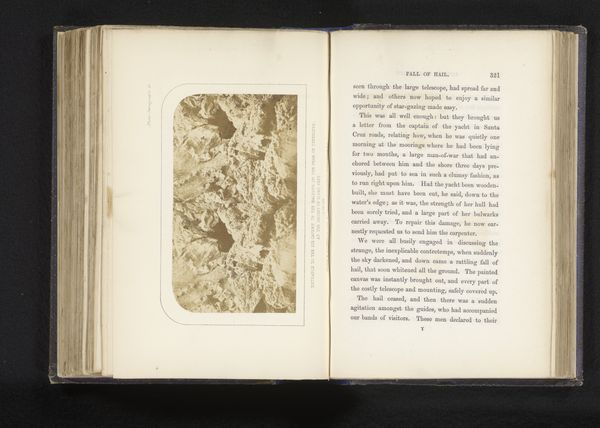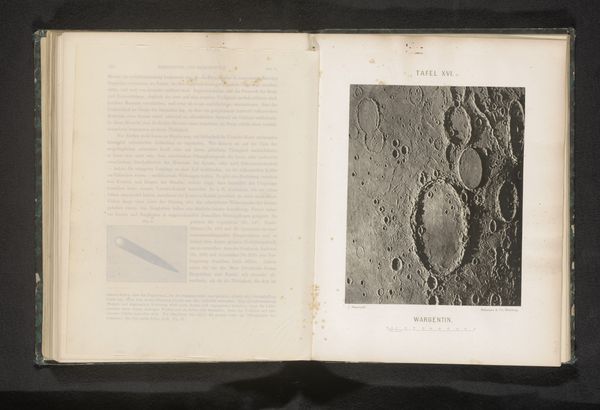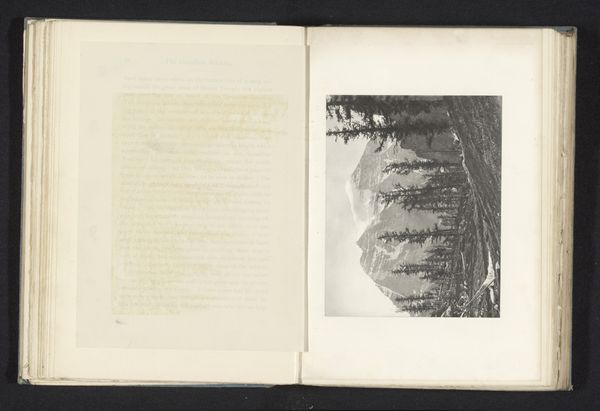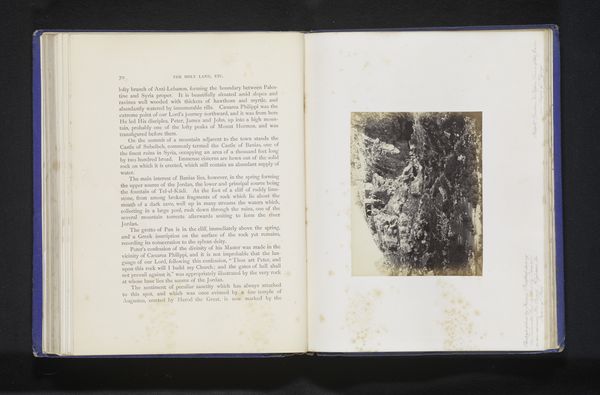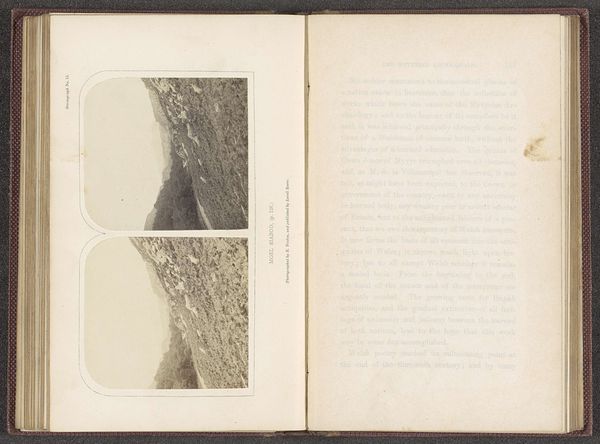
print, etching, photography
#
aged paper
#
still-life-photography
#
homemade paper
#
paper non-digital material
#
paperlike
# print
#
typeface
#
etching
#
paper texture
#
photography
#
fading type
#
stylized text
#
thick font
#
realism
#
historical font
Dimensions: height 145 mm, width 201 mm
Copyright: Rijks Museum: Open Domain
Curator: So here we have "Gipsmodel van een maankrater," a plaster model of a lunar crater, created before 1873. The artist is James Nasmyth. It is on display here at the Rijksmuseum. Editor: Oh, wow! At first glance, it feels like I'm peering into some ancient, otherworldly wound. So stark, you know? The contrasting blacks and whites give it an almost unnerving intensity. Curator: Exactly. What you're seeing is a product of Nasmyth's particular method. He was intensely interested in making the cosmos knowable, using photography of models and detailed etchings to investigate what had previously been inaccessible to most. He painstakingly constructed plaster models based on telescopic observations, then photographed them to create the illusion of actual lunar landscapes. Editor: I find it incredibly clever – using earthly materials, the humble plaster, to depict something so utterly remote! I mean, the texture is uncanny. It actually looks more convincing than some modern digitally enhanced images of the moon. It's wonderfully lo-fi yet evokes such grandeur. Curator: Absolutely. Nasmyth's technique allowed for controlled lighting and shadow, emphasizing the textures and contours of the craters in a way that pure telescopic observation sometimes couldn't. And this particular print – well, the Rijksmuseum attributes it as a photographic print or perhaps even an etching. It embodies that Victorian fascination with both scientific accuracy and artistic interpretation. The intersection of those disciplines, you might say. It challenges our contemporary view of the photographic medium by exposing it as just as manipulated, as “constructed,” as anything else. Editor: True. This print being on the opposite page to that period script...there is something deeply evocative about seeing text from a different time trying to describe and grapple with an object millions of miles away. Almost like these crater walls aren’t on the moon, but instead represent knowledge, learning and time itself. The material book makes for a good support. Curator: And in terms of audience experience, imagine seeing this reproduced in books; a real democratizing force in Victorian science. It would have opened up an entirely new world of study. Editor: Well, seeing this artwork today reminds me that, really, we’re still figuring out how to look at the universe and everything inside it. So in that sense, I appreciate Nasmyth offering a material solution for depicting a complex problem. It's very much punk space exploration if I could say so! Curator: I agree entirely. It's a fascinating confluence of craft, science, and imagination. A beautiful artefact about the construction and labor of image-making, ultimately.
Comments
No comments
Be the first to comment and join the conversation on the ultimate creative platform.
